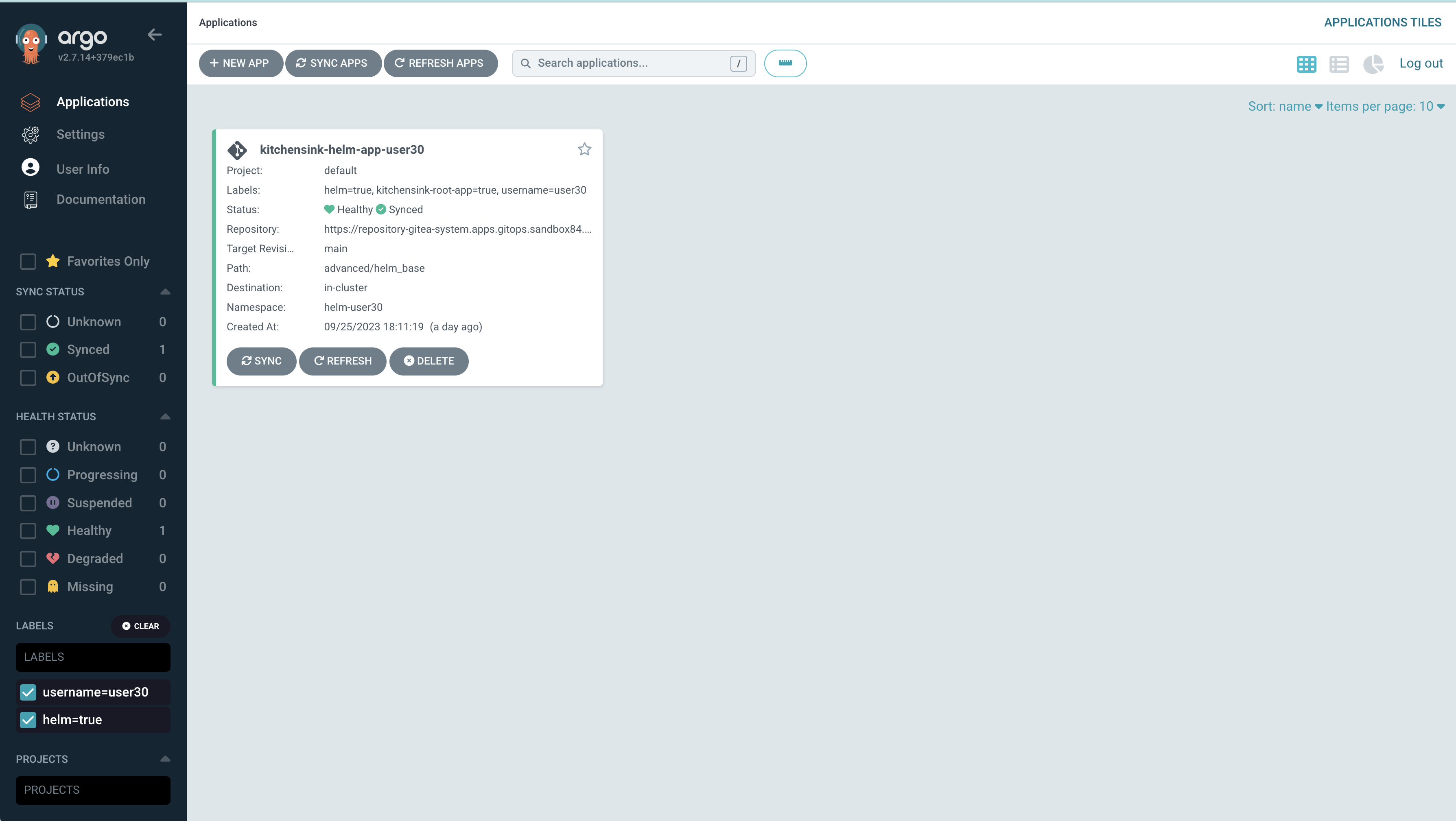ArgoCD + Kustomize + Helm
Overview
In the chapter devoted to helm we discussed the possibility of using helm to generate the base descriptors for kustomize instead of using static descriptors. Well, this is what you’re going to do here.
Let’s recap here the key points of what we want to achieve:
-
Git is the source of truth
-
We want to deploy on different platforms and different environments
To accomplish this, we need to use helm and kustomize together. This is possible because Argo CD plugin framework allows to define custom plugins. In this exercise you will use one custom plugin called kustomized-helm[1].
|
If you want to know more in detail the difference between |
Deploy Kitchensink app with ArgoCD + Kustomize + Helm
Now we want to deploy a JBoss EAP application using the helm templates kustomized for dev and test environments.
cat <<EOF | oc apply -n openshift-gitops -f -
apiVersion: argoproj.io/v1alpha1
kind: ApplicationSet
metadata:
name: kitchensink-kustomized-helm-%USERNAME%
namespace: openshift-gitops
labels:
argocd-root-app: "true"
username: %USERNAME%
spec:
generators:
- list:
elements:
- env: dev
ns: helm-kustomize-dev-%USERNAME%
desc: "Helm + Kustomize (Dev)"
- env: test
ns: helm-kustomize-test-%USERNAME%
desc: "Helm + Kustomize (Test)"
template:
metadata:
name: kitchensink-kustomized-helm-app-{{ env }}-%USERNAME%
namespace: openshift-gitops
labels:
kitchensink-root-app: "true"
kustomized-helm: "true"
username: %USERNAME%
finalizers:
- resources-finalizer.argocd.argoproj.io
spec:
destination:
namespace: '{{ ns }}'
name: in-cluster
project: default
syncPolicy:
automated:
selfHeal: true
syncOptions:
- CreateNamespace=true
source:
path: advanced/overlays/{{ env }}
repoURL: "https://repository-gitea-system.apps.%BASE_SUBDOMAIN%/%USERNAME%/kitchensink-conf"
targetRevision: main
plugin:
env:
- name: DEBUG
value: 'false'
- name: BASE_NAMESPACE
value: 'cicd-tekton-%USERNAME%'
name: kustomized-helm-v1.0
EOFCheck the deployment status in both Argo and OpenShift.
Argo
Open the following link to see the new Application objects you just created through the ApplicationSet in ArgoCD UI.
https://openshift-gitops-server-openshift-gitops.apps.%BASE_SUBDOMAIN%/applications?labels=username%253D%USERNAME%%2Ckustomized-helm%253Dtrue
OpenShift
To see the progress of deployment you should go to namespace helm-%USERNAME% in the OpenShift web console or just copy the following link.
https://console-openshift-console.apps.%BASE_SUBDOMAIN%/topology/ns/helm-kustomize-dev-%USERNAME%?view=graphhttps://console-openshift-console.apps.%BASE_SUBDOMAIN%/topology/ns/helm-kustomize-test-%USERNAME%?view=graphBenefits of the GitOps/ArgoCD model
-
It provides an infrastructure base as code for application deployment.
-
It is based on Git, so everything we know about git is reused.
-
Allows deployment in multiple clusters in a simple way.
-
Includes the concept of a generator that simplifies complex deployments: multiple departments, business units, etc.
-
Not only deploys, but also fixes (un)voluntary modifications in the deployment environments.
Well, it’s time to set up webhooks to automate pipelines run.
